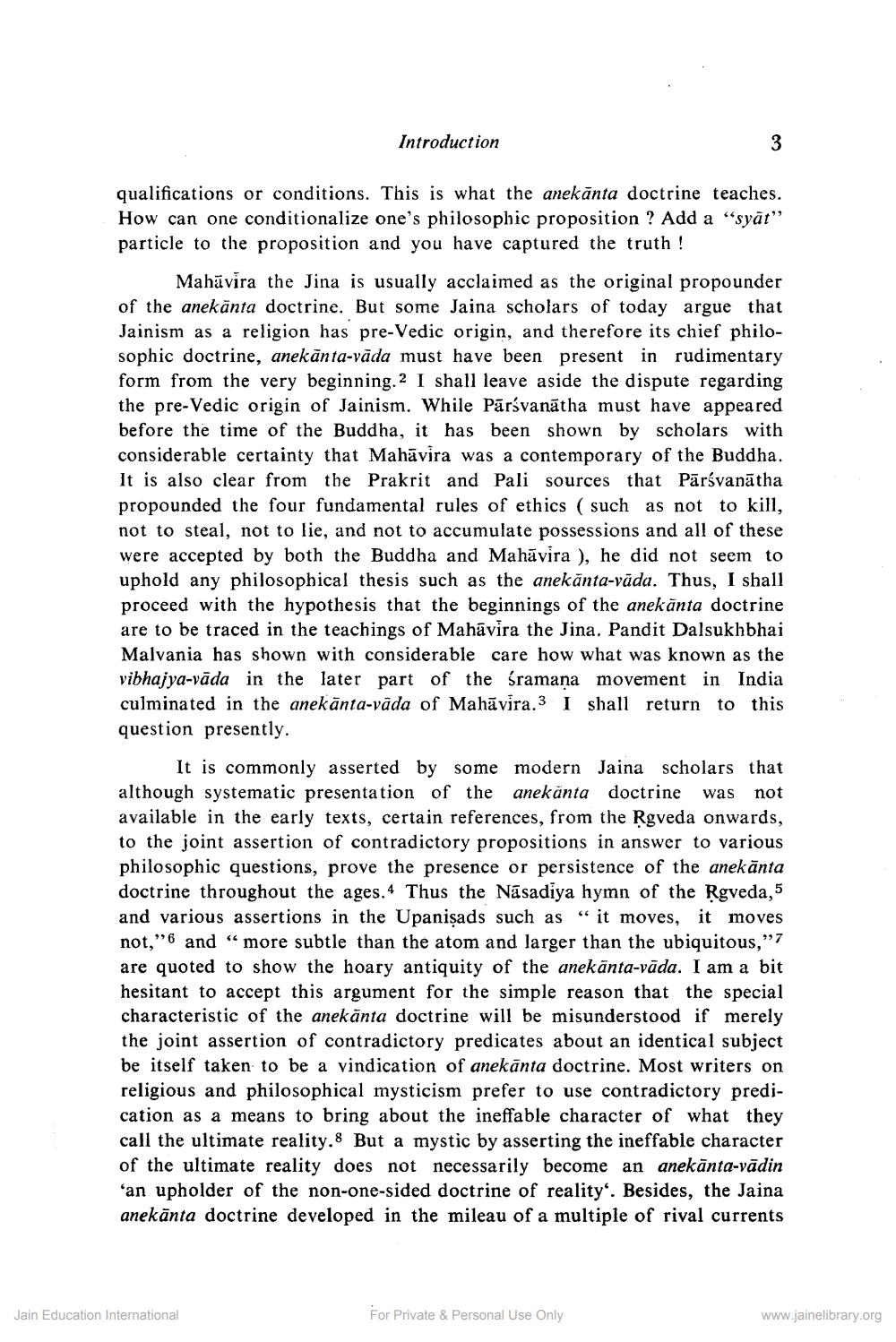________________
Introduction
qualifications or conditions. This is what the anekānta doctrine teaches. How can one conditionalize one's philosophic proposition ? Add a "syāt" particle to the proposition and you have captured the truth!
Mahāvira the Jina is usually acclaimed as the original propounder of the anekānta doctrine. But some Jaina scholars of today argue that Jainism as a religion has pre-Vedic origin, and therefore its chief philosophic doctrine, anekanta-vāda must have been present in rudimentary form from the very beginning. I shall leave aside the dispute regarding the pre-Vedic origin of Jainism. While Pārsvanātha must have appeared before the time of the Buddha, it has been shown by scholars with considerable certainty that Mahāvira was a contemporary of the Buddha. It is also clear from the Prakrit and Pali sources that Pārsvanātha propounded the four fundamental rules of ethics (such as not to kill, not to steal, not to lie, and not to accumulate possessions and all of these were accepted by both the Buddha and Mahāvira ), he did not seem to uphold any philosophical thesis such as the anekānta-vāda. Thus, I shall proceed with the hypothesis that the beginnings of the anekānta doctrine are to be traced in the teachings of Mahāvira the Jina. Pandit Dalsukhbhai Malvania has shown with considerable care how what was known as the vibhajya-vāda in the later part of the śramana movement in India culminated in the anekānta-vāda of Mahāvira.3 I shall return to this question presently.
It is commonly asserted by some modern Jaina scholars that although systematic presentation of the anekanta doctrine was not available in the early texts, certain references, from the Rgveda onwards, to the joint assertion of contradictory propositions in answer to various philosophic questions, prove the presence or persistence of the anekānta doctrine throughout the ages.4 Thus the Násadiya hymn of the Rgveda,5 and various assertions in the Upanişads such as “ it moves, it moves not,"6 and “more subtle than the atom and larger than the ubiquitous,"7 are quoted to show the hoary antiquity of the anekānta-vāda. I am a bit hesitant to accept this argument for the simple reason that the special characteristic of the anekānta doctrine will be misunderstood if merely the joint assertion of contradictory predicates about an identical subject be itself taken to be a vindication of anekānta doctrine. Most writers on religious and philosophical mysticism prefer to use contradictory predication as a means to bring about the ineffable character of what they call the ultimate reality.8 But a mystic by asserting the ineffable character of the ultimate reality does not necessarily become an anekānta-vādin 'an upholder of the non-one-sided doctrine of reality. Besides, the Jaina anekānta doctrine developed in the mileau of a multiple of rival currents
Jain Education International
For Private & Personal Use Only
www.jainelibrary.org




